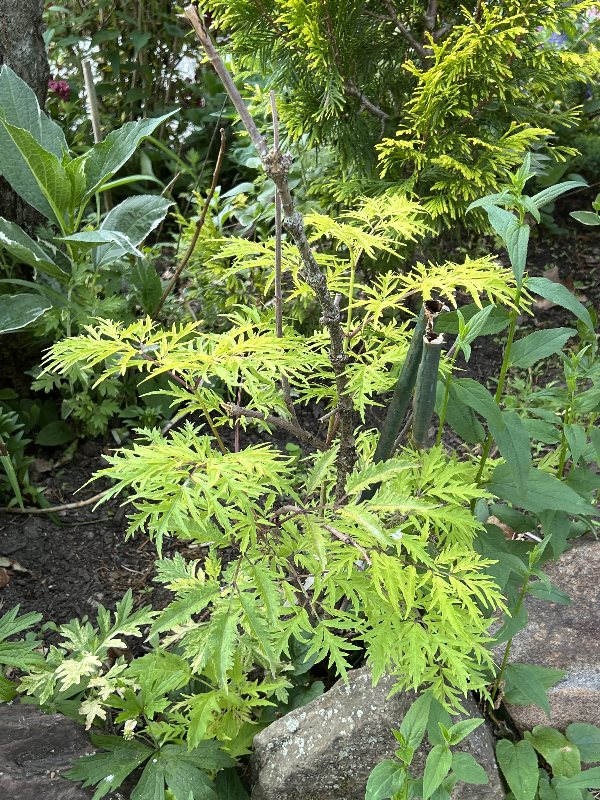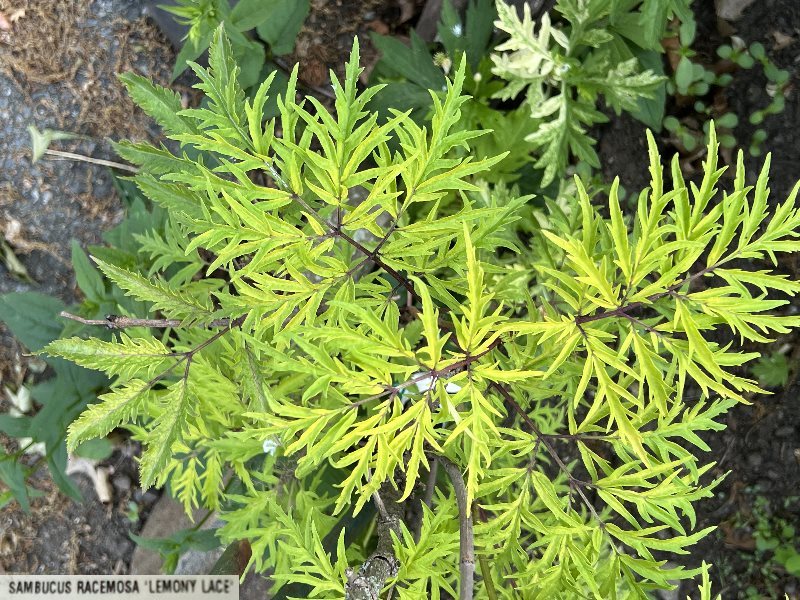
Ashley Davidoff TheCommonVein.net Our Garden

Ashley Davidoff TheCommonVein.net Our Garden
Sambucus racemosa ‘Lemony Lace’ is a cultivar of the Red Elderberry or European Red Elder (Sambucus racemosa). It is a deciduous shrub known for its striking golden foliage and delicate lace-like appearance.
Here are some key features of Sambucus racemosa ‘Lemony Lace’:
Appearance: ‘Lemony Lace’ is prized for its finely dissected leaves that have a lacy texture. The foliage emerges as a bright chartreuse or yellow-green color in spring and matures to a golden yellow shade as the season progresses. The leaflets are deeply cut, giving them a feathery appearance. In early summer, clusters of small creamy-white flowers appear, which are followed by small red berries in late summer to early fall.
Size: This cultivar typically grows as a compact, mounding shrub, reaching a height and spread of around 3 to 5 feet (0.9 to 1.5 meters). Its compact size makes it suitable for small gardens or as a container plant.
Growing Conditions: ‘Lemony Lace’ thrives in full sun to partial shade conditions. It prefers well-drained soil that is rich in organic matter. It is relatively adaptable to different soil types and can tolerate both wet and dry conditions. It is hardy in USDA hardiness zones 3 to 7.
Care and Maintenance: This shrub is generally low-maintenance. Regular watering is recommended, especially during dry periods, to keep the soil consistently moist. Pruning can be done in late winter or early spring to maintain its shape and remove any dead or damaged branches.
Landscape Use: Sambucus racemosa ‘Lemony Lace’ is a versatile shrub that can be used in various garden settings. Its vibrant foliage and delicate texture make it an eye-catching focal point or a colorful addition to mixed borders, rock gardens, or woodland gardens. It can also be utilized in mass plantings or as a low hedge. The red berries produced by the plant are attractive to birds and can provide wildlife interest.
It’s important to note that while the berries of the Red Elderberry are not suitable for human consumption, they can be attractive to birds and wildlife.
Overall, Sambucus racemosa ‘Lemony Lace’ is valued for its vibrant golden foliage, lacy appearance, and adaptability. Its unique characteristics make it a sought-after choice for adding texture and color to gardens and landscapes.
